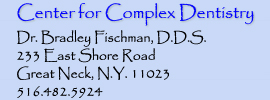 |
 |
Nitrous oxide gas was first discovered by the English scientist Joseph Priestley in 1772. In 1799 Humphry Davy gave Nitrous Oxide to visitors at the Pneumatic Institute and coined the term "laughing gas". He also discovered the gas' analgesic effects. By the 1840's it was recognized as having a use in dentistry. Today it is used in combination with oxygen in the dental office.
Nitrous Oxide is not metabolized by the body, and is therefore both safe and short acting in a controlled environment. Within the limits allowed by the doctor, the patient is in control. You never lose consciousness, though you may fall asleep, and since it is delivered by nose piece, you can always breath through your mouth to control the level.
The two primary effects of laughing gas are first, relaxation and a condensation of time, and secondly an increase in your pain threshold. If you were to hit your hand against the wall, first you would feel pain, and then it would gradually disappear. If you were using Nitrous Oxide at this time, you would feel much less original pain from the impact, and no residual pain.
Some of the sensations associated with nitrous use are:
- a feeling like you are floating
- sounds coming from a distance
- a warmth or tingling in your hands or feet
- and for many people excellent fantasies.
Do to the short duration of action, a few minutes after treatment you will be able to drive home. When this is used in combination with interseptal local anesthesia it is possible to leave the office with no numbness and no unpleasant memories.
Dentures | Extreme Makeovers | Doctor's Credentials | Map & Policies | Contact Us
Home | Professional Referrals | Tidbits for Dentists | Newsletters for MDs